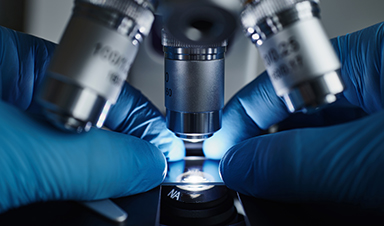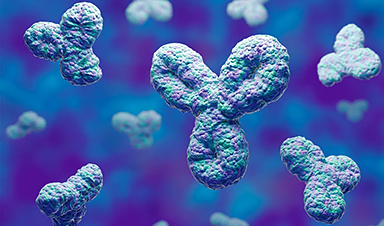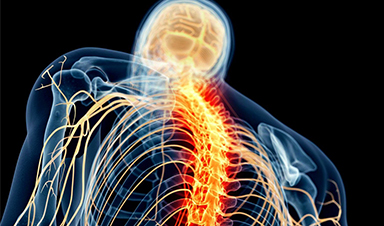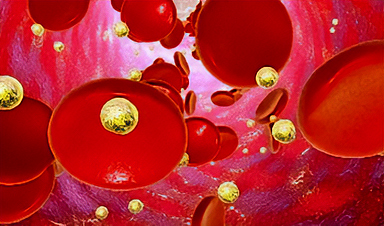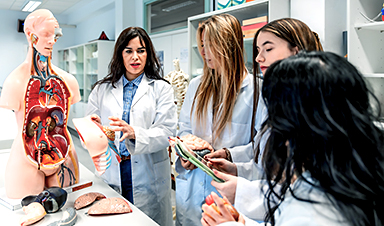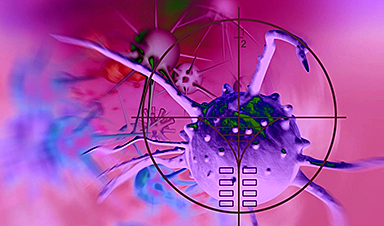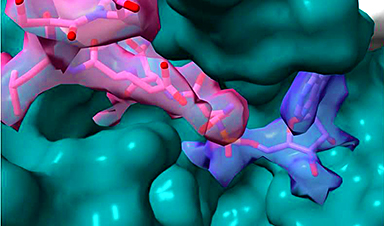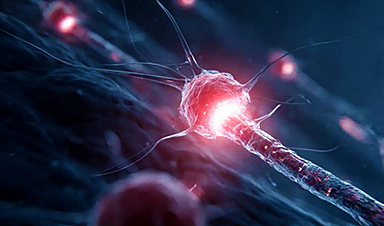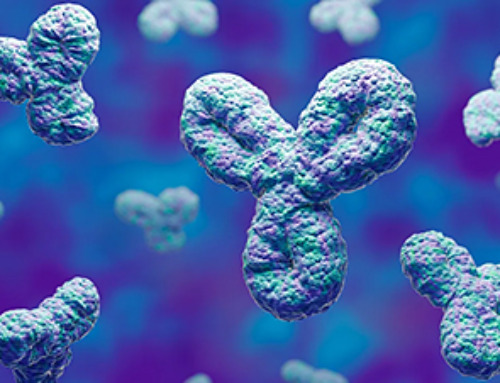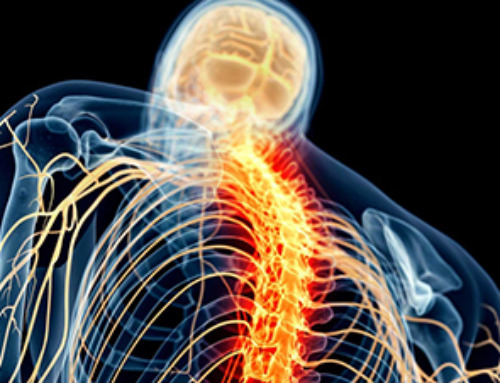A team of researchers at the Swiss Federal Institute of Technology has developed a high-performance Scanning Ion Conductance Microscope (SICM) using the latest advances in nanopositioning, nanopore fabrication, microelectronics and controls engineering.
Time-resolved scanning allows the 3D visualization of dynamic structures in a eukaryotic cell membrane at nanometer resolutions.
Studying the functions of living cells and organelles at the nanoscale is vital to understanding the causes of disease. Traditional approaches, including electron microscopy, may, unfortunately, damage these cells.
The Swiss researchers developed a SCIM microscope that resolves spatiotemporally diverse three-dimensional processes on a eukaryotic cell membrane at sub-5 nanometer axial resolution. This may offer insights into intracell interactions in the fight against infections and disease.
The Origins of Scanning Probe Microscopy
Studying the intricate functions of living cells at the nanoscale is a unique challenge. Researchers have developed a range of techniques to meet this challenge, including atomic force microscopy (AFM), scanning tunneling microscopy (STM) and Scanning Probe Electrochemistry (SPE).
Scanning probe microscopy (SPM) forms images of surfaces using a probe that scans the specimen. The technique made its first appearance in 1981 in the form of the scanning tunneling microscope, which produces images at atomic resolution by scanning a specimen using a probe.
In scanning probe microscopes, piezoelectric actuators move the probe with atomic-level precision controlled by electronics. The probe raster scans the specimen. It captures discrete data points which are used to form an image. Its manner of scanning is called a mode.
Scanning Ion Conductance Microscopy (SICM) was developed by P.K. Hansma and his colleagues at the University of California in 1989. An electrolyte-containing aqueous medium is a poor conductor.
A SCIM microscope scans a nanoprobe (micro-pipette with a 50 to 100 nm hole) close to the surface of the specimen. As the probe moves across the specimen, ionic currents flow through the pipette. The strengths of these currents vary according to the electrical resistance across the sample’s surface, thus revealing information about its composition.
In the hopping mode described by the Swiss team, however, the nanoprobe is not raster scanned. It moves vertically up and down in a hopping motion.
The probe approaches the specimen at a distance of 25 to 50 nm at specified points and retracts, thus providing discrete points of measurement from which an image is formed. Crucially, the probe never touches the specimen, thus preventing damage to the sample.
SCIM microscopy is, therefore, a powerful tool for capturing the steep changes in a cell’s topography without affecting the sample.
Time-Resolved Scanning Ion Conductance Microscopy
Time-resolved SICM microscopes produce high-resolution profiles of cell shapes and surface characteristics. However, these need to be correlated with biochemical information and changes to the internal organization of the cells.
The Swiss team integrated an inverted optical microscope to a SICM microscope which allowed them to combine recently developed super-resolution microscopy techniques into their approach.
The SICM setup consisted of a custom-built pipette Z-actuator (vertical actuator) integrated into a controlled-atmosphere device, critical for cell viability during imaging.
The imaging of eukaryotic cells requires piezo actuators with a long-range (>10−20 μm). This leads to a trade-off between resonance frequency and the range of the actuator. The team overcame this by adaptively slowing down the pipette’s velocity and applying a gain to the piezo motion as a function of the current interaction curve.
The Z-actuator achieved a wide mechanical displacement amplification of 22 μm scanning range on the cell surface. It was driven by a custom-made piezo controller and integrated with a stepper-motor stage for approaching the sample.
The team used borosilicate and quartz nanopipettes for probing. They were fabricated with a CO2 laser puller with a radius of 20 to 60 nm in size. Quartz capillaries were shrunk to a sub-10-nm radius using electron beam irradiation.
Many cellular processes occur at time scales of minutes or hours and are easily trackable with time-lapse SICM. Subcellular processes, such as endocytosis or infection, however, occur much faster. The Swiss team’s technique combines the capability to address large imaging volumes (up to 220 000 μm3) relatively quickly with high-speed SICM imaging of small details on live cells.
The wide range of measurements possible (Scan sizes from 500 × 500 nm2 to 100 × 100 μm2, imaging speeds from 0.5 s/image to 20 min/image; Number of pixels per image from 1 Kp to 1 Mp; Depth of view of 22 μm with axial resolution below 10 nm) significantly enhances the range of biological studies facilitated by SICM microscopy.
News
Specially engineered antibody delivers RNA therapy to treatment-resistant tumors
Elias Quijano, PhD; Diana Martinez-Saucedo, PhD; Zaira Ianniello, PhD; and Natasha Pinto-Medici, PhD, there are 25 other contributors, most from Yale's Department of Therapeutic Radiology and from the departments of genetics, molecular biophysics and [...]
Vaccinated women face fewer cervical cancer risks
New data from Denmark shows the HPV vaccine’s powerful long-term impact, while also revealing why cervical cancer screening is still essential. A Danish study published in the journal Eurosurveillance reports that women who received the human [...]
3D-printed implant offers a potential new route to repair spinal cord injuries
A research team at RCSI University of Medicine and Health Sciences has developed a 3-D printed implant to deliver electrical stimulation to injured areas of the spinal cord, offering a potential new route to [...]
Nanocrystals Carrying Radioisotopes Offer New Hope for Cancer Treatment
The Science Scientists have developed tiny nanocrystal particles made up of isotopes of the elements lanthanum, vanadium, and oxygen for use in treating cancer. These crystals are smaller than many microbes and can carry isotopes of [...]
New Once-a-Week Shot Promises Life-Changing Relief for Parkinson’s Patients
A once-a-week shot from Australian scientists could spare people with Parkinson’s the grind of taking pills several times a day. The tiny, biodegradable gel sits under the skin and releases steady doses of two [...]
Weekly injectable drug offers hope for Parkinson’s patients
A new weekly injectable drug could transform the lives of more than eight million people living with Parkinson's disease, potentially replacing the need for multiple daily tablets. Scientists from the University of South Australia [...]
Most Plastic in the Ocean Is Invisible—And Deadly
Nanoplastics—particles smaller than a human hair—can pass through cell walls and enter the food web. New research suggest 27 million metric tons of nanoplastics are spread across just the top layer of the North [...]
Repurposed drugs could calm the immune system’s response to nanomedicine
An international study led by researchers at the University of Colorado Anschutz Medical Campus has identified a promising strategy to enhance the safety of nanomedicines, advanced therapies often used in cancer and vaccine treatments, [...]
Nano-Enhanced Hydrogel Strategies for Cartilage Repair
A recent article in Engineering describes the development of a protein-based nanocomposite hydrogel designed to deliver two therapeutic agents—dexamethasone (Dex) and kartogenin (KGN)—to support cartilage repair. The hydrogel is engineered to modulate immune responses and promote [...]
New Cancer Drug Blocks Tumors Without Debilitating Side Effects
A new drug targets RAS-PI3Kα pathways without harmful side effects. It was developed using high-performance computing and AI. A new cancer drug candidate, developed through a collaboration between Lawrence Livermore National Laboratory (LLNL), BridgeBio Oncology [...]
Scientists Are Pretty Close to Replicating the First Thing That Ever Lived
For 400 million years, a leading hypothesis claims, Earth was an “RNA World,” meaning that life must’ve first replicated from RNA before the arrival of proteins and DNA. Unfortunately, scientists have failed to find [...]
Why ‘Peniaphobia’ Is Exploding Among Young People (And Why We Should Be Concerned)
An insidious illness is taking hold among a growing proportion of young people. Little known to the general public, peniaphobia—the fear of becoming poor—is gaining ground among teens and young adults. Discover the causes [...]
Team finds flawed data in recent study relevant to coronavirus antiviral development
The COVID pandemic illustrated how urgently we need antiviral medications capable of treating coronavirus infections. To aid this effort, researchers quickly homed in on part of SARS-CoV-2's molecular structure known as the NiRAN domain—an [...]
Drug-Coated Neural Implants Reduce Immune Rejection
Summary: A new study shows that coating neural prosthetic implants with the anti-inflammatory drug dexamethasone helps reduce the body’s immune response and scar tissue formation. This strategy enhances the long-term performance and stability of electrodes [...]
Scientists discover cancer-fighting bacteria that ‘soak up’ forever chemicals in the body
A family of healthy bacteria may help 'soak up' toxic forever chemicals in the body, warding off their cancerous effects. Forever chemicals, also known as PFAS (per- and polyfluoroalkyl substances), are toxic chemicals that [...]
Johns Hopkins Researchers Uncover a New Way To Kill Cancer Cells
A new study reveals that blocking ribosomal RNA production rewires cancer cell behavior and could help treat genetically unstable tumors. Researchers at the Johns Hopkins Kimmel Cancer Center and the Department of Radiation Oncology and Molecular [...]
